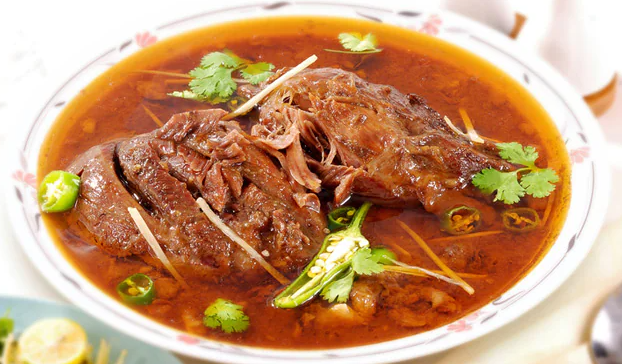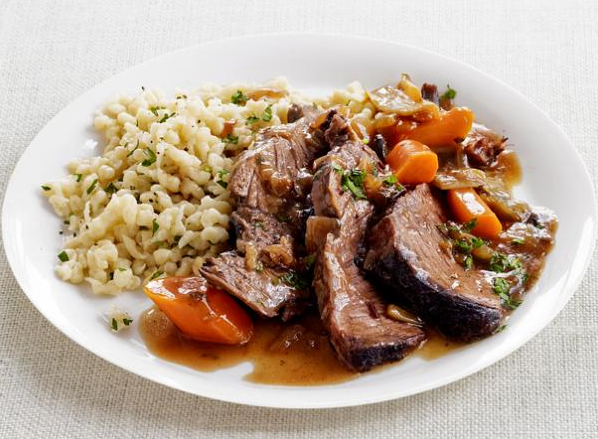Are you ready to embark on a culinary journey to Brunei, a Southeast Asian gem? In this article, we will delve into the depths of Brunei National Dish, Ambuyat. With its unique flavor profile, cultural significance, and traditional preparation, Ambuyat stands as a symbol of Bruneian cuisine and heritage. Join us as we explore this delightful dish, step into the shoes of a country expert, and uncover the wonders of Ambuyat.
Brunei, a small country nestled on the island of Borneo, boasts a rich culinary heritage. At the heart of this gastronomic tapestry lies Ambuyat, a dish that has captured the taste buds and hearts of Bruneians for centuries. Ambuyat is not just a meal; it is an experience that celebrates Brunei’s traditions, history, and cultural identity.
What is Ambuyat?
Ambuyat, often referred to as the “national dish” of Brunei, is a starchy delicacy made from the sago palm tree. The inner trunk of the tree is extracted to obtain the starch, which is then processed into a smooth, viscous substance. This substance, when mixed with water, transforms into a glue-like consistency, forming the basis of Ambuyat.
History and Cultural Significance of Brunei National Dish
Ambuyat’s roots can be traced back to the days when Brunei was a prosperous maritime empire. It was during this period that Ambuyat gained popularity among the Bruneian royalty and nobility. Today, Ambuyat is enjoyed by people from all walks of life, symbolizing unity and harmony.
Ingredients Used in Ambuyat
The simplicity of Ambuyat lies in its ingredients. Apart from the sago starch, the dish requires water and a pinch of salt. These basic components come together to create a versatile dish that can be customized with various accompaniments.
Preparation of Brunei National Dish
Preparing Ambuyat requires skill and finesse. The sago starch is mixed with water and vigorously stirred until it reaches the desired consistency. This process, known as “memutihkan,” involves continuous stirring to achieve a smooth texture without lumps. The result is a unique culinary masterpiece that showcases the artistry of Bruneian cuisine.
Serving and Eating Ambuyat
Traditionally, Ambuyat is served in a communal bowl called a “cacad.” A bamboo fork, known as a “chandas,” is used to twirl the viscous Ambuyat around the fork. The delicate dance between the fork and the Ambuyat requires dexterity and precision. The dish is often accompanied by an array of side dishes, adding depth and flavor to the overall dining experience.
Ambuyat in Brunei’s Culinary Scene
Ambuyat holds a special place in Brunei’s culinary scene. It is not only enjoyed in homes but also served in restaurants and during festive occasions. The dish has gained recognition not only locally but also internationally, captivating the palates of travelers and food enthusiasts.
Health Benefits of Ambuyat
Beyond its cultural significance, Ambuyat offers several health benefits. The sago starch used in Ambuyat is gluten-free, making it a suitable option for individuals with gluten intolerance. Additionally, it is rich in carbohydrates, providing a sustainable source of energy. Ambuyat’s versatility also allows for the incorporation of nutritious accompaniments, further enhancing its health profile.
Brunei National Dish; Variations and Regional Influences
While Ambuyat remains true to its roots, regional variations and influences have contributed to its diversity. Different regions in Brunei add their unique twist to the dish, incorporating local ingredients and flavors. These variations create a culinary landscape that is as diverse as the country itself.
Popular Ambuyat Accompaniments
Ambuyat is often accompanied by an assortment of side dishes, elevating the dining experience. Grilled fish, spicy sauces, stir-fried vegetables, and sambal belacan are among the popular accompaniments that complement the subtle flavors and textures of Ambuyat. The interplay between the main dish and its accompaniments creates a harmonious symphony of taste.
Ambuyat: A Dish for Special Occasions
Ambuyat holds a special place in Brunei’s celebrations and gatherings. From royal banquets to weddings and religious festivities, Ambuyat takes center stage, reflecting the significance of these occasions. It brings people together, fostering a sense of community and shared joy.
Ambuyat and Bruneian Identity
Ambuyat serves as a culinary symbol of Bruneian identity. It represents the traditions, heritage, and values deeply rooted in the hearts of the Bruneian people. The dish showcases the country’s commitment to preserving its cultural legacy and passing it on to future generations.
Brunei National Dish: Cultural Heritage and Tourism
Ambuyat plays a vital role in Brunei’s cultural heritage and tourism. Visitors to Brunei are often treated to the experience of preparing and enjoying Ambuyat, immersing themselves in the customs and traditions of the country. It serves as a gateway to understanding Brunei’s rich cultural tapestry.
Ambuyat: Tips for Trying and Enjoying
For those eager to embark on an Ambuyat adventure, here are a few tips to enhance your experience:
- Embrace the unique texture and consistency of Ambuyat.
- Experiment with different accompaniments to discover your preferred flavor combinations.
- Engage with locals to learn more about the cultural significance of Ambuyat.
- Don’t be afraid to use your hands and immerse yourself in the dining experience.
Conclusion
Brunei’s national dish, Ambuyat, encapsulates the essence of Bruneian cuisine and culture. From its humble ingredients to its intricate preparation and communal dining experience, Ambuyat is a culinary masterpiece that celebrates tradition and togetherness. By immersing yourself in the wonders of Ambuyat, you embark on a journey that transcends food and offers a deeper understanding of Brunei’s vibrant heritage.
FAQs
- What does Ambuyat taste like?
Ambuyat has a subtle flavor with a slightly gelatinous texture. It is often described as bland on its own, but its true appeal lies in the accompanying sauces and side dishes that add a burst of flavor and complement the unique texture of Ambuyat.
- Can I find Ambuyat outside of Brunei?
Ambuyat is primarily a dish found in Brunei, as it is deeply rooted in Bruneian culture and traditions. However, with the growing popularity of Southeast Asian cuisine, you may find variations or dishes inspired by Ambuyat in some restaurants outside of Brunei.
- Is Ambuyat suitable for vegetarians?
Yes, Ambuyat is suitable for vegetarians as it is made from the starch of the sago palm tree, which is a plant-based ingredient. However, it is important to note that the accompanying sauces and side dishes may contain animal products, so it is advisable to check with the restaurant or prepare them using vegetarian-friendly ingredients.
- Are there any traditional customs associated with eating Ambuyat?
Yes, there are traditional customs associated with eating Ambuyat. One of the customs is using a bamboo fork called a “chandas” to twirl the sticky Ambuyat around it before eating. This technique requires practice and adds to the unique dining experience. Additionally, Ambuyat is often enjoyed in a communal setting, where people gather around a shared bowl and enjoy the dish together, fostering a sense of togetherness and unity.
- How can I recreate Ambuyat at home?
To recreate Ambuyat at home, you will need sago starch, water, and a pinch of salt. Mix the sago starch with water in a bowl, stirring vigorously until it forms a smooth, glue-like consistency. It is important to continuously stir to avoid lumps. Once the desired texture is achieved, serve the Ambuyat in a communal bowl and prepare accompanying sauces and side dishes of your choice. Enjoy the Ambuyat by twirling it around the bamboo fork and dipping it into the flavorful accompaniments.
References:
- “Ambuyat: Brunei’s national dish.” Brunei Tourism Board. Accessed May 20, 2023. Link
- Chen, Hui Lin. “Ambuyat, the National Dish of Brunei.” The Culture Trip. Last modified September 14, 2021. Link
- Foong, C. W. “Ambuyat: Borneo’s Sticky National Dish.” Borneo Insider’s Guide. Accessed May 20, 2023. Link
- Ng, Sharon. “Exploring the Unique Culinary Heritage of Brunei: Ambuyat.” The Food Explorer. Last modified June 14, 2022.

